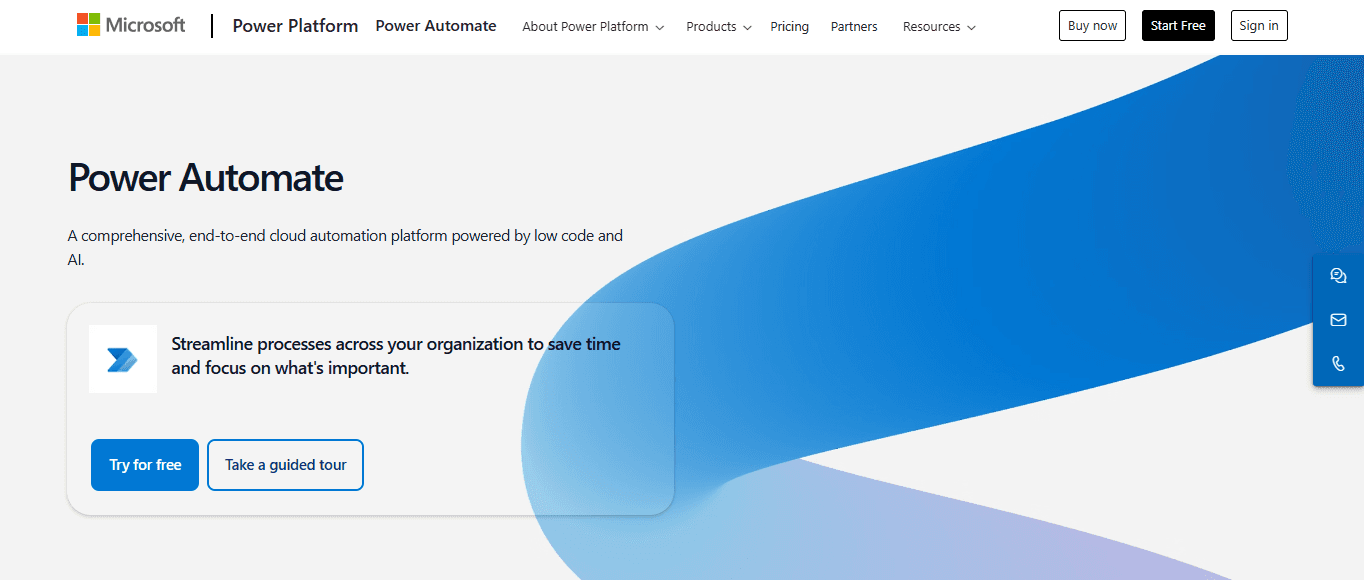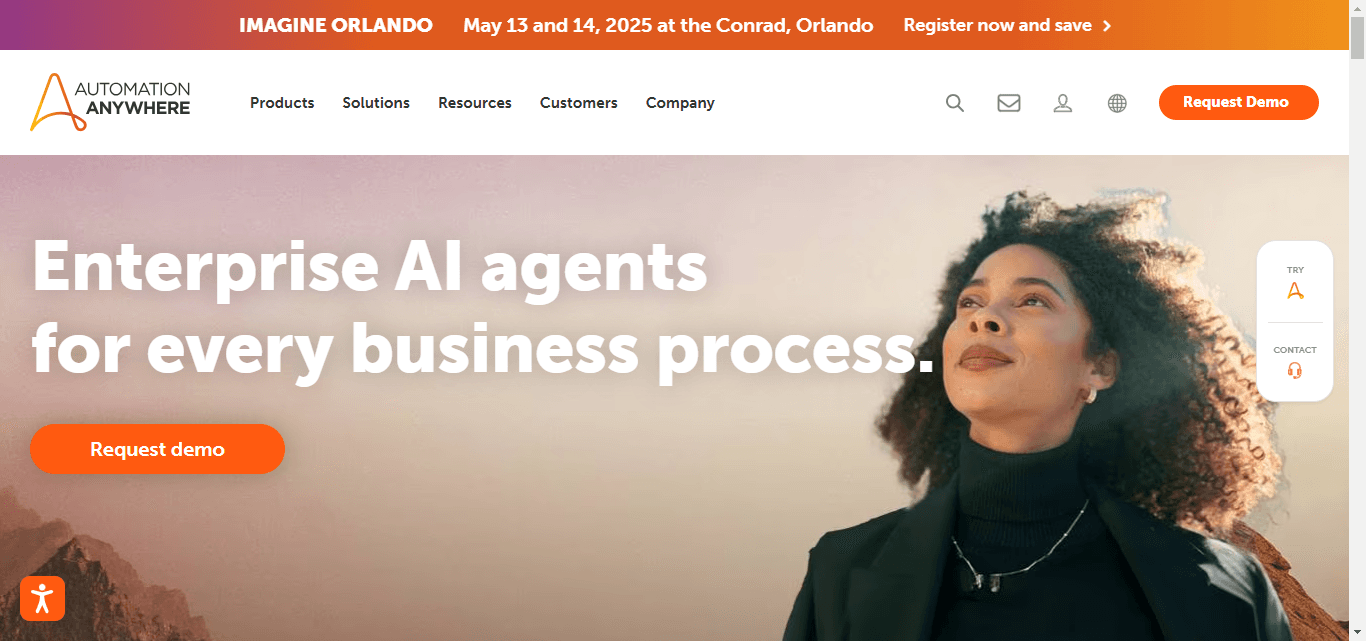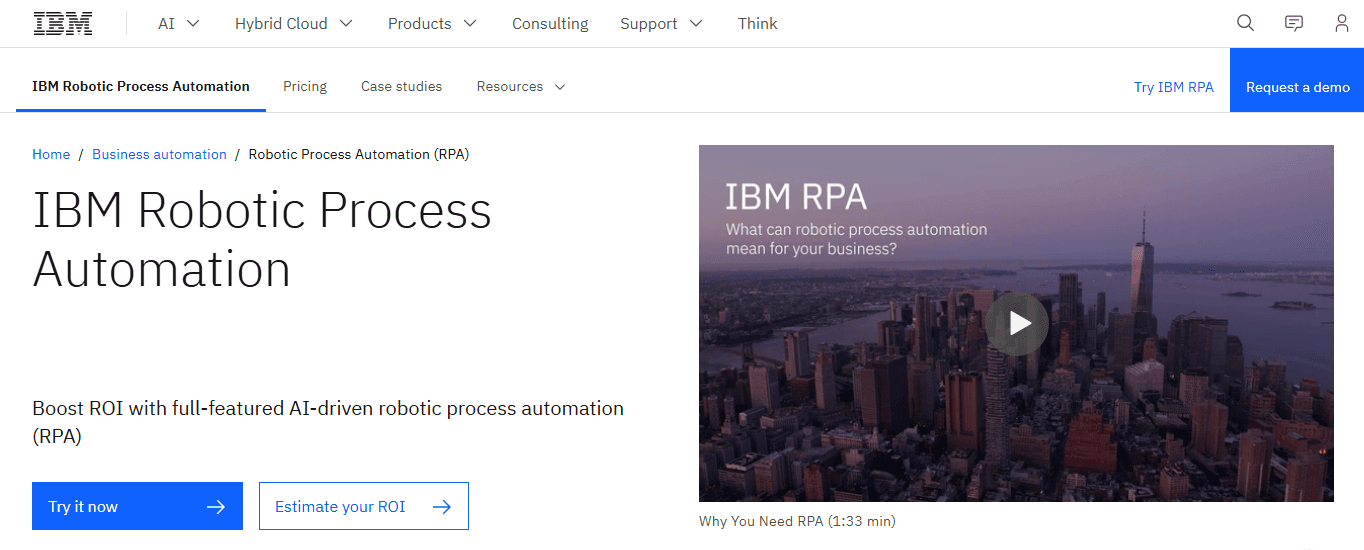How Much Does RPA Implementation Cost & How It Pays Off?
 Admin
Admin Digital Transformation
Digital Transformation Aug 30, 2024
Aug 30, 2024

Table of Content
Repetitive tasks slow down your team. RPA helps, but is it worth the cost?
Most businesses deal with time-consuming work like data entry, invoice processing, and compliance checks. These tasks are necessary but eat into your team's focus and productivity.
That is why Robotic Process Automation (RPA) has gained so much attention. It offers a way to handle routine work more efficiently, reduce human error, and free up employees to focus on higher-value tasks.
Many companies that adopt RPA solutions report better compliance, improved output quality, and noticeable cost savings. In fact, most see a return on their investment within the first year.
Still, RPA is not always easy to scale. Some businesses see early success with one or two processes, but struggle to expand. Others end up abandoning the effort altogether. A common reason for this is the cost.
Basic automation might cost around $4,000. Complex implementations that involve multiple systems and departments can reach well over $100,000. Without a clear plan, costs can rise faster than expected.
So what exactly drives RPA expenses? More importantly, how can you make sure your investment delivers real value without going over budget?
This guide will walk you through the key factors behind RPA costs and how to get the most out of your automation strategy.
Unlock RPA Benefits with Prioxis
Transform your business operations with intelligent automation.
How Much RPA Implementation Cost?
Robotic Process Automation (RPA) offers businesses a compelling opportunity to automate tedious, repetitive tasks, freeing up employees for more valuable work. The advantages are clear: increased efficiency, better compliance, and cost savings. According to a Deloitte study, the benefits of RPA include:
- 92% improvement in compliance
- 86% boost in productivity
- 90% enhancement in quality
- 59% reduction in costs
These statistics highlight why RPA is being hailed as a transformative solution in the business world. However, it’s important to remember that RPA isn’t without its challenges. While most companies that have implemented RPA plan to expand their investment over the next three years, only a small percentage have scaled their automation efforts.
Initial cost savings from automating high-volume processes might not always offset the overall costs of automation. This can lead to rising expenses and lower-than-expected returns, prompting some companies to reconsider their RPA strategies.
The True Cost of Automation
The cost of implementing RPA majorly depends on the number of RPA bots and the software components involved. Typically, a single bot can cost between $5,000 and $15,000. However, licensing fees only represent about 25-30% of the total RPA cost. The remaining 70-75% comes from:
- Annual RPA license renewal fees
- Training or hiring of internal subject matter experts
- Consulting fees for RPA implementation, through the RPA vendor or a third-party provider
- Infrastructure setup costs
- Expenses for integrating third-party software (like process mining or discovery tools)
- Maintenance costs associated with fixing issues that prevent RPA from reaching its full potential
5 Key Cost Drivers of RPA Implementation
1. Understand Vendor Pricing Models
The first factor influencing RPA costs is the pricing model of the RPA vendor. Vendors typically offer several pricing structures, including:
- Per Bot Pricing: A straightforward model where costs are based on the number of bots, ranging from $5,000 to $15,000 per bot per year.
- Subscription-Based Pricing: A recurring fee for using the RPA software, typically between $20,000 to $100,000 per year, depending on scale and features.
- Consumption-Based Pricing: Costs are based on actual usage, with prices ranging from $0.02 to $0.10 per transaction.
- Enterprise Licensing: A flat fee for unlimited usage across the enterprise, often ranging from $500,000 to $1,000,000 per year.
Selecting the right pricing model is crucial to managing your RPA implementation costs effectively.
2. RPA Bot Quantity & Complexity
The number and complexity of AI bots required influenced the cost of RPA implementation. Simple bots handling basic tasks cost between $10,000 to $50,000 per bot, while advanced bots with AI and machine learning capabilities can vary from $50,000 to $150,000 per bot.
3. Initial Analysis, Consulting, & Development
Before diving right into Robotic Process Automation, it’s important to conduct a thorough process analysis. This involves consulting fees and engineering costs, typically ranging from $30,000 to $100,000. This phase is critical, as it ensures that your automation strategy is well-aligned with your business goals, setting the stage for a successful implementation.
4. Third-Party APIs Integration Cost
Integrating your RPA solution with existing systems and third-party software can add to the overall cost. Depending on the complexity of these integrations, costs can range from $20,000 to $200,000. However, this investment is necessary to ensure seamless operation and maximize the value of your RPA solution.
5. Ongoing Maintenance, Support, & Scaling Costs
You must maintain and scale your RPA solution after deployment to ensure long-term success. Annual maintenance and support costs generally range from $10,000 to $50,000, while scaling costs can vary widely from $20,000 to $150,000 per year, depending on your business needs.
A Detailed Breakdown of RPA Implementation Costs
1. Development Costs: Building Your RPA Bots
Development costs include the design, programming, testing, and deployment of your RPA bots. Depending on complexity, these costs can range from $50,000 to $500,000. Custom development for specialized processes can increase these expenses but often delivers significant value.
2. Infrastructure Costs: Supporting Your RPA Solution
Infrastructure costs cover the hardware and software required to run your RPA bots. These costs typically range from $20,000 to $150,000, depending on whether you opt for on-premises solutions or cloud-based services. Leveraging existing infrastructure can help reduce these costs.
3. Maintenance Costs: Ensuring Long-Term Success
Ongoing maintenance is essential to keep your RPA solution running smoothly. Annual maintenance costs typically range from $10,000 to $100,000. Planning for these recurring costs ensures that your RPA system continues to deliver value year after year.
Top 5 RPA Vendors
1. UiPath Automation Platform
UiPath is a leading hyper automation platform that integrates RPA with AI-driven capabilities. It is widely recognized for its enterprise-grade automation solutions that help businesses streamline complex workflows.
Rating: 4.6/5
Average Cost: High (enterprise-level pricing)
Pros:
- UiPath has an extensive feature set, covering a broad range of automation scenarios.
- Large and active community support, with a wealth of resources and forums.
- Strong AI and machine learning integrations.
Cons:
- The platform is expensive, making it less accessible for smaller businesses.
- The steep learning curve, especially for advanced features and customizations.
- UiPath requires dedicated IT resources for implementation and maintenance.
2. Microsoft Power Automate
Microsoft Power Automate (formerly Microsoft Flow) is a cloud-based tool that automates workflows between apps and services. It's especially powerful within the Microsoft ecosystem, offering seamless integration with tools like Office 365, Dynamics, and Azure.
Rating: 4.5/5
Average Cost: Moderate (subscription-based pricing, with a free tier available)
Pros:
- Integrates effortlessly with Microsoft products, which is ideal for businesses already using Microsoft solutions.
- User-friendly interface that allows both technical and non-technical users to create automation workflows.
- It offers AI Builder to incorporate AI into functional workflows.
Cons:
- Limited functionality compared to dedicated RPA platforms like UiPath and Automation Anywhere.
- Performance can be slower with more complex workflows.
- Advanced automation capabilities may require additional licensing or third-party tools.
3. Nintex Process Platform
Nintex offers a complete process management and automation platform. It enables organizations to automate, manage, and optimize business processes through a drag-and-drop interface, making it accessible even for non-developers.
Rating: 4.4/5
Average Cost: Moderate (varies based on features and scale)
Pros:
- Intuitive and easy-to-use interface with drag-and-drop capabilities.
- Strong process mapping and documentation features.
- Broad range of integrations with third-party applications.
Cons:
- Scalability issues, especially for very large enterprises or highly complex processes.
- Some users report limitations in the customization options available.
- Occasional performance issues with larger workflows.
4. Automation Anywhere
Automation Anywhere is a comprehensive RPA platform that enables businesses to automate end-to-end business processes. The platform emphasizes intelligent automation, combining RPA with AI and machine learning capabilities.
Rating: 4.3/5
Average Cost: High (pricing based on licensing, with enterprise solutions being the most expensive)
Pros:
- Highly scalable, capable of handling complex automation tasks across large enterprises.
- Advanced analytics and reporting tools that provide deep insights into automated processes.
- Strong security and compliance features, making it suitable for regulated industries.
Cons:
- High cost, particularly for smaller organizations or those with simpler automation needs.
- Implementation and setup require significant technical expertise.
- Occasional user interface issues, especially for new users.
5. IBM Robotic Process Automation
IBM Robotic Process Automation is part of IBM's broader AI-powered automation portfolio. It combines RPA with AI, business process management, and decision automation, providing a comprehensive solution for large enterprises.
Rating: 4.2/5
Average Cost: High (enterprise-level pricing)
Pros:
- It integrates seamlessly with other IBM products, creating a cohesive ecosystem for enterprise automation.
- Strong security and compliance capabilities, suitable for industries with stringent regulatory requirements.
- Advanced AI integrations, allowing for sophisticated automation solutions.
Cons:
- Expensive, with a cost structure that might be prohibitive for smaller organizations.
- Complex setup and configuration processes, requiring significant IT involvement.
- The platform’s extensive features can be overwhelming, leading to a longer learning curve.
Real-World Examples: What RPA Implementation Costs Might Look Like
1. Automating Healthcare Patient Appointment Scheduling
A healthcare provider looking to automate patient appointment scheduling might expect to invest between $50,000 to $150,000.
If a large healthcare provider wants to automate the scheduling of patient appointments to reduce manual workload and minimize errors. And the provider decides to integrate the RPA solution with their existing electronic health records (EHR) system using a platform like UiPath, the process might look like this:
A project team could consist of one project manager, two RPA developers, and a systems integration specialist. Over six weeks, the team might develop and test the RPA bots, with another four weeks dedicated to system integration and user training.
The cost for this RPA implementation could range from $50,000 to $150,000, covering expenses such as RPA vendor licensing fees, infrastructure upgrades, this includes the development of bots, integration with electronic health records (EHR) systems, and customization based on scheduling rules and training for healthcare staff.
At prioxis, we develop a healthcare mobile app for post-orthopedic surgery recovery that integrates EHR, Google Fit, and Apple Health, while optimizing patient management and portal support for healthcare organizations.
2. Streamlining Payment Processing for Financial Institutions
Suppose a financial services company sought to automate their payment processing tasks, including validating payment information against banking data and updating their accounting software systems. If they chose an RPA platform considering strong security features, the implementation might involve:
A project team consisting of one project manager, two RPA developers, one machine learning engineer (for automating document processing), and one business analyst. The team could develop a proof-of-concept within eight weeks, with another six weeks for full system deployment.
The estimated cost for this RPA implementation could range from $100,000 to $250,000, covering vendor licensing fees, on-premises server deployment, maintenance, and employee training to ensure effective system use.
Checkout this portfolio where we developed an end-to-end Financial Management Platform that integrates payroll, real-time insights, and predictive analytics for 1000+ financial consultancy services advisors.
3. Automating Document Processing in Fintech
Consider a scenario where a Fintech company wants to automate the processing of large volumes of financial documents, such as loan applications and compliance reports. If they chose a platform like Automation Anywhere, which is capable of handling complex workflows, the project might unfold as follows:
A project team might include one project manager, two RPA developers, and a compliance expert. The team could build a prototype in six weeks, followed by an eight-week full-scale implementation, ensuring the system can handle peak loads effectively.
Checkout this portfolio where we automated applications using OCR Technology and Azure Functions.
The cost for such an RPA solution might range from $75,000 to $200,000, which would include RPA software licensing, integration with existing systems, and ongoing maintenance to ensure the system remains compliant with regulatory requirements.
How Businesses Can Cut RPA Implementation Expenses and Increase ROI
Controlling RPA costs starts with making smarter decisions before the first bot is deployed. Many companies overspend not because RPA is inherently expensive, but because they underestimate complexity or overlook long-term requirements. Here are practical ways to keep costs in check while still getting strong returns:
1. Start Small with High-Impact Processes
Begin with a few simple, repetitive tasks that run frequently and follow clear rules. These are easier to automate and offer fast wins. For example, invoice matching or employee onboarding tasks can often be automated with minimal setup and high return.
The goal is to build confidence and prove value before expanding to more complex workflows.
2. Standardize Before You Automate
Trying to automate messy, inconsistent processes leads to higher setup costs and more bot errors. Clean up and document processes first. Standardization reduces the time and effort needed for configuration and testing.
3. Use Reusable Components
If you're automating multiple similar workflows, create reusable modules. For example, a login script for one system can be reused across departments, cutting development time significantly.
4. Avoid Over-Customization
Custom logic and heavy integration drive up costs quickly. Use out-of-the-box features wherever possible, especially if you're working with common tools like Excel, Outlook, or SAP.
5. Choose the Right RPA Platform
Some RPA platforms offer pay-as-you-scale pricing, while others charge per bot or by the number of transactions. Choose a platform that matches your usage model and provides transparent licensing terms. If your usage is seasonal or project-based, opt for platforms with flexibility.
6. Build Internal Capability Early
Relying solely on external consultants can get expensive. While expert guidance is helpful in the beginning, train internal teams to manage bot maintenance and small updates over time. This reduces ongoing costs and gives you more control.
7. Track ROI with the Right Metrics
Define what success looks like before the rollout. Monitor cost savings, time saved, error reduction, and user satisfaction. When leaders see real numbers, it becomes easier to justify future investments in automation.
Turn that ‘this should be automated’ thought into action!
You already know the task.
Why RPA Is Worth the Long-Term Investment?
1. Sustained Efficiency & Productivity Gains
RPA enables your business to automate repetitive tasks, freeing up your workforce to focus on strategic, high-value activities. Over time, this leads to sustained productivity gains, allowing your organization to achieve more with the same resources, ultimately translating into significant cost savings.
2. Accuracy & Compliance
Manual errors can be costly and detrimental to compliance. RPA implementation ensures that processes are executed with precision which reduces the risk of costly mistakes and ensuring adherence to regulatory requirements. This is particularly beneficial in highly regulated industries such as finance and healthcare.
3. Scalable Automation for Business Growth
As your business grows, RPA can scale to meet increasing demands without the need for proportional increases in staffing. This scalability ensures that your business remains agile and capable of handling growth efficiently, without a corresponding increase in operational costs.
4. Long-Term Cost Reduction & ROI
While the initial investment in RPA may seem substantial, the long-term savings are significant. By reducing labor costs and minimizing errors, RPA delivers a strong ROI, often within a few years of implementation. These savings continue to grow as your automation capabilities expand.
5. Customer Experience & Business Agility
By automating customer-facing processes, RPA can significantly improve the speed and accuracy of service delivery. This leads to enhanced customer satisfaction and loyalty, which are critical for long-term business success.
Additionally, RPA’s ability to adapt to changing business needs ensures that your organization remains competitive in a rapidly evolving market.
Challenges in Determining RPA Implementation Costs
Figuring out how much Robotic Process Automation (RPA) will cost is not always easy. On paper, it might seem like a simple calculation. In reality, several moving parts affect the final number. Below are the key challenges businesses often face when trying to estimate RPA implementation costs:
1. Each Process Has Hidden Complexity
Some processes appear straightforward until you try to automate them. Exceptions, manual checks, or system dependencies can quickly make things more complicated. The more complex a workflow is, the more time and money it takes to automate properly.
2. Unclear Project Scope
One of the most common cost mistakes is starting an RPA initiative without defining what success looks like. When goals are vague, teams may automate the wrong tasks or expand the scope mid-way. This leads to rework, delays, and higher costs.
3. Different Tools Come with Different Pricing
RPA software platforms offer varied pricing models. Some charge per bot, others charge based on usage or by feature tier. Without fully understanding how the pricing works, it is easy to underestimate both upfront and ongoing expenses.
4. Ongoing Costs Are Often Missed
Buying or building a bot is only part of the picture. Bots need maintenance, updates, and occasional redesigns when business rules or systems change. If these recurring costs are not included in your estimate, your budget may fall short in the long run.
5. Integration with Existing Systems Can Be Costly
Many RPA projects need to connect with CRMs, ERPs, or legacy platforms. These integrations often require custom development or third-party tools, which add to both setup and support costs.
6. Lack of Internal Readiness
If your team has never managed RPA before, you may rely heavily on external consultants. This adds to your budget and may create long-term dependency unless you plan for internal training and handover.
Calculating RPA Implementation Costs: A Business Guide
Knowing the cost ranges is important, but equally important is how you approach the calculation itself. Many RPA projects run over budget because of unclear assumptions, rushed planning, or underestimated complexity. Below is a simple guide to help you calculate RPA costs with more accuracy and control.
1. Start with Clear Business Objectives
Before assigning numbers, define the outcomes you want from RPA. Is your goal to reduce headcount, improve accuracy, increase compliance, or save processing time? Clear objectives will help you decide what to automate first, which directly impacts your cost model.
2. Estimate Based on Process Type and Volume
Cost varies not just by complexity but also by how often a process runs and how stable it is. A rule-based process that runs daily will likely deliver higher ROI than a complex task that runs once a month. Prioritize accordingly.
3. Include Both One-Time and Recurring Costs
Your earlier cost breakdown already covers development, infrastructure, and maintenance. Make sure you are calculating total cost of ownership, not just initial implementation. Recurring costs like licensing, updates, monitoring, and user support need to be factored into your annual budget.
4. Assess Internal vs External Capabilities
If you rely entirely on external partners for every task, costs will rise quickly. Consider training internal staff to handle routine maintenance or process adjustments after the initial rollout. This reduces long-term dependency and keeps operational costs predictable.
5. Use a Cost Range, Not a Single Number
Avoid rigid budgeting. Use cost bands (for example, minimum expected, most likely, and maximum potential cost) to plan more realistically. This prepares stakeholders for variability and avoids scope freeze due to budget fears.
6. Build in a Buffer for Scaling
Many RPA programs start small but expand quickly once results come in. When calculating your budget, reserve a portion for future automation opportunities. This gives you room to respond without re-approaching the board for additional funding.
Tip: Always leave room in your budget for scaling. Once your team sees early success, the demand for automation often grows. Planning ahead keeps costs under control and ensures you get lasting value.
Get a Personalized RPA Cost Estimate
Get a quick, no-obligation estimate and see how much you can save with Prioxis.
Conclusion: The Smart Path Forward with RPA
Investing in RPA is not just about reducing operational costs; it’s about transforming your business for long-term success.
Now is the time to consider how RPA can benefit your business. Whether you’re looking to streamline processes, enhance customer experience, or scale your operations, RPA provides the tools to achieve these goals. Don’t wait—explore how RPA can transform your business today.
At Prioxis, we help businesses scale RPA effectively, reduce costs, and achieve faster ROI. Our comprehensive RPA implemented solutions ensure that your automation efforts are well-aligned with your business goals, driving long-term success. Achieve better outcomes with our RPA expertise.
Get in touch





